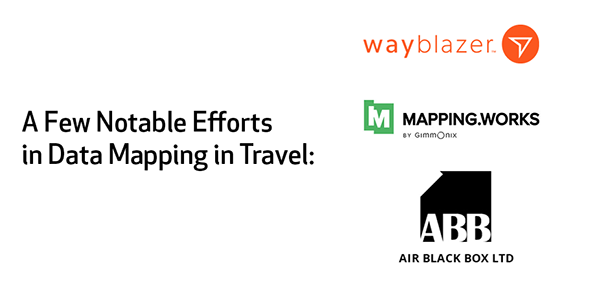Data Mapping: Critical endeavor or wasted effort?
- Published:
- December 2017
- Analyst:
- Bob Offutt

The web was designed to be a document-sharing system. As a result, much of the data it contains is text-based, and has limited provisions for machine-readable, structured data that can be easily organized for humans at scale. The notable exception is extensible markup language (XML), which is primarily used by developers for business purposes.
The pioneers of the web have tried to provide an element of structure beyond freeform documents with the semantic web, which adds common data attributes and exchange protocols within the web page constructs.
In travel, there are many efforts to create value through data mapping, incorporating XML and semantic web data to help humans find the needles in the haystacks of travel information available online.

A few notable efforts are:
- Wayblazer, in conjunction with IBM's Watson project, extracts and organizes useful destination-related data from a plethora of sources and provides destination recommendation services using artificial intelligence (AI). Wayblazer claims that their recommendations have a higher degree of relevance to the traveler and are more likely to be followed, especially when personalized, by matching up customer data.
- Gimmonix demonstrated its Mapping.Works product at the recent 2017 Phocuswright Conference. The demonstration showed a hotel room mapping product that uses AI to match and normalize hotel room definitions, enabling shoppers to do room-to-room comparisons as opposed to property-to-property.
- Air Black Box uses data mapping to enable passengers to book their connecting tickets, seats and meals in a single transaction, ensuring that bags will reach their final destination.
The key challenge here is to understand who will use these capabilities. Is it OTAs trying to improve the shopping experience? Destinations trying to attract visitors? Airlines attempting to provide journey services in a world where connectivity is not always easy? Content providers trying to surface more personalized content? One could argue that it is not always in the best interests of suppliers, who generally prefer not to feature one-to-one comparisons.
The ideas behind XML and the semantic web have been around for decades, and data mapping is heavily relied upon by travel companies for tasks like lodging property matching between content sources. While it is still early days in proving the ROI and use cases of a far deeper level of data mapping, the efforts appear to be promising.
RELATED RESEARCH
Artificial Intelligence for Travel
Use of AI in Travel
Blockchain, Artificial Intelligence, Chats and Bots
See and understand the next level of technological innovation at the Phocuswright Europe (May 15 - 17 in Amsterdam) session, The Ultimate Tech Talk.
Register through January 19 to save €600 off the final ticket price.







.png)

.jpg)



